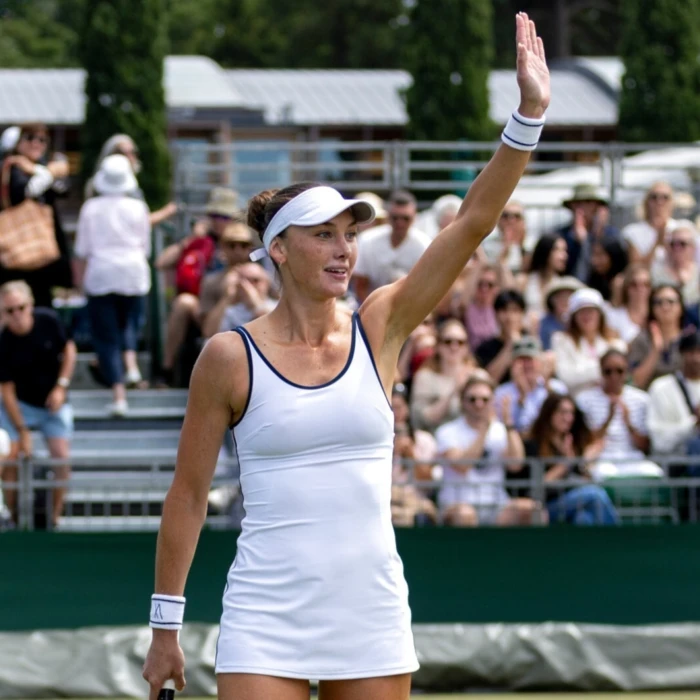Leylah Fernandez, 19, can become a Grand Slam event champion, and join Bianca Andreescu as the second Canadian winner of the US Open in three years when she plays in the final on Saturday. Her opponent will be the two months younger, 18-year-old Emma Raducanu of Great Britain.
The Fernandez storybook run continued Thursday night when she overcame Aryna Sabalenka 7-6(3), 4-6, 6-4 before an enraptured, partisan crowd in Arthur Ashe Stadium. The object of their affection was the boisterous battler from Laval, Quebec, who, in her last four matches has beaten an established quartet of WTA headliners – No. 3-ranked Naomi Osaka, No. 17 Angelique Kerber, No. 5 Elina Svitolina and No. 2 Sabalenka.
Fernandez was pushed to three sets against each of them but, in the end, was the more composed and controlled competitor.
Chris Evert, the American who won 18 Grand Slam titles in the 1980s and 1990s, proved prescient commenting for ESPN, saying part way through the first set when Sabalenka got off to a flying start and led 4-1, “Leylah has to keep it close because she’s the better pressure player.”
When Fernandez gradually fought back and took the first set in a tiebreak 7-3, that assessment seemed spot on. But then not so much in the second set when Sabalenka settled in, getting the decisive service break at 4-all when three of the last four points in that game were Fernandez unforced errors. In the following game, Sabalenka served out to love, finishing with a confident flourish – a nifty serve-and-volley winner.
Fernandez had blinked in a tight situation in a way she had not in her previous five matches. In the third set, she broke to 4-2 but the 23-year-old Belarusian broke back immediately to 3-4 and held to 4-all.
There could hardly have been a better definition of a close, pressure-packed situation and Evert’s analysis was about to be confirmed. Fernandez held serve to 15, with the first three points being a backhand winner, a backhand swing-volley winner and an ace on her way to 5-4. Sabalenka’s first three points serving to stay in the match at 4-5 could hardly have been a more colossal collapse – a weak backhand error into the net, a double fault well wide of the centre line and a double fault into the net.
For the record, Fernandez only needed one of her three match points at love-40 – a forehand unforced error well long by Sabalenka – to wrap up the two-hour and 21-minute match. She then squatted, jubilant and relieved, before sitting on the court with a big smile.

Fernandez had just been 19 years old for three days and played opponents in her previous four rounds who varied in age from 23 (Sabalenka) to 33 (Kerber).
Exactly 50 years ago in 1971, at 16 years old, ‘Chrissie’ Evert, a schoolgirl from Fort Lauderdale, Florida, reached the US Open semi-finals. She was a Leylah-like darling of the crowds before the great Billie Jean King beat her. But on her way she upset a string of older players and said Thursday night, “I could tell by looking at them that they were nervous wrecks (playing a 16-year-old). I knew I had time on my side so I could play freely.”
There has been one constant in Fernandez’s victories over the last four opponents, she has been the superior player from the baseline – controlling rallies with consistent, aggressive and creative shot-making that frustrated her opponents and ultimately broke their spirits like a boxer landing endless body blows.

Against Sabalenka her winners to unforced errors ratio was a tidy 26/23 while the heavy-hitting Belarusian’s was a reckless 45/52.
After the match, Fernandez repeated her mantra about “trusting” her game, continuing to fight and looking over at her family and friends – including legendary Canadian basketballer Steve Nash on Thursday – for support during matches.
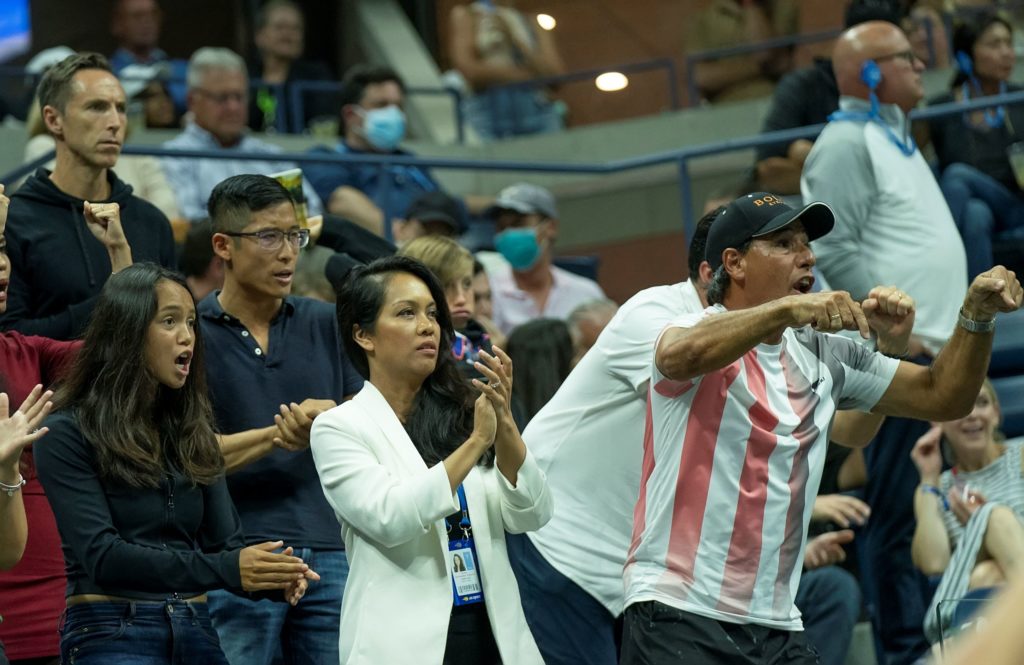
At a generous 5-foot-6 in height and with a slight physique, there have been doubters all through Fernandez’s life about her prospects of a career in tennis. During her Thursday night media conference, she recalled an incident when she was in about grade six. “I remember one teacher, which was actually very funny – at the time it wasn’t – but now I’m laughing. She told me to stop playing tennis, ‘you will never make it, and just focus on school.’ I’m just glad that she told me that because every day I have that phrase in my head saying that I’m going to keep going. I’m going to push through, and I’m going to prove to her everything that I’ve dreamed of – I’m going to achieve them.”
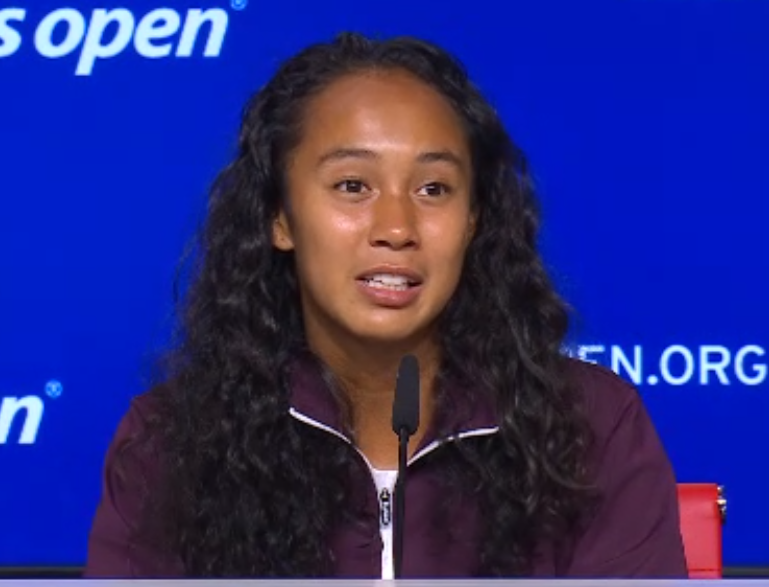
She also talked about how her mother Irene went to California to work to support the family while she, aged 10 to 13, stayed with her father Jorge and sister Bianca in Laval, just north of Montreal. “He also made the decision one day to pack our things, go to the U.S.,” Fernandez said about Jorge, “so we can be with my mom. I’m just glad that we made that decision of doing that, having my mom go to California because it made me stronger. I think it made my family, too, saying that we’re going to make the sacrifice, it’s going to be worth it so I can make that dream possible. I’m just eternally grateful for everything that’s happened to us.”
The culmination of her dream would be to become US Open champion in the final against Raducanu. Like Fernandez in the earlier semi-final, the 18-year-old (19 in November) Briton defeated an older player, 26-year-old Maria Sakkari, 6-1, 6-4. It seemed like an outcome similar to Fernandez with Sabalenka, the older Sakkari feeling the pressure facing the fearless Raducanu.
The fact that two teenagers are in the final was almost unthinkable – especially Raducanu who had to go through the qualifying and has become the first qualifier in history, either woman or man, to make it to a Grand Slam final.
Fernandez joins Genie Bouchard (Wimbledon 2014) and Andreescu (2019 US Open) as the only Canadian women to reach a Grand Slam final, while Raducanu is the first British woman since Virginia Wade won Wimbledon in 1977.
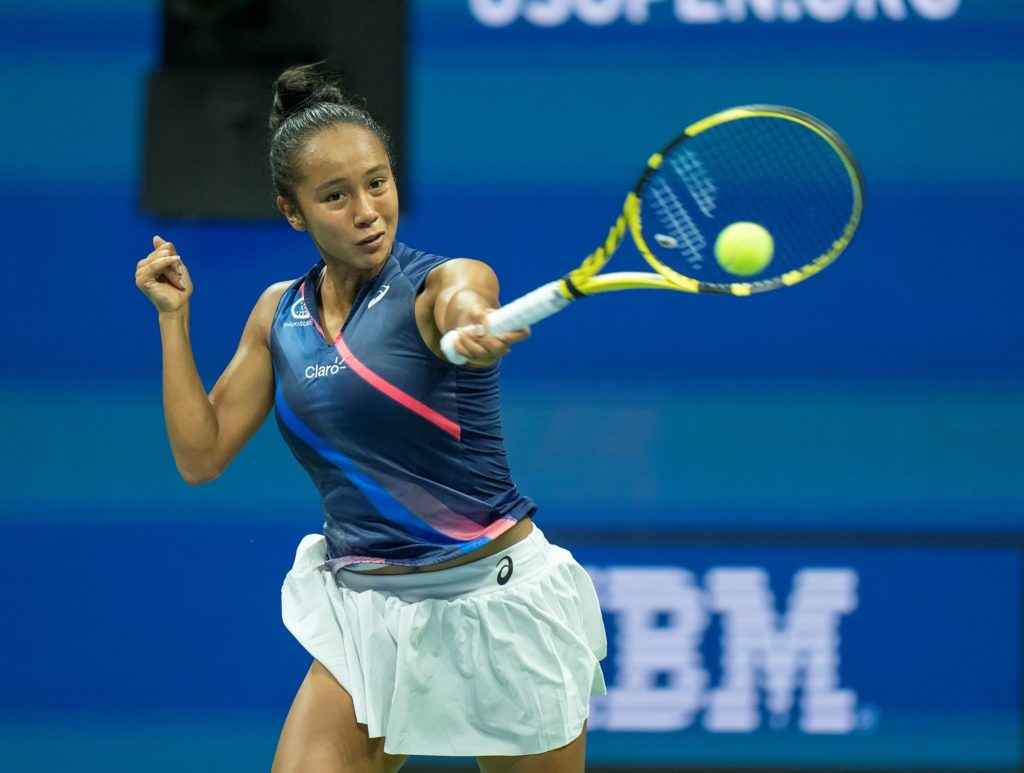
Comparing Fernandez and Raducanu’s paths to the final – Fernandez has had it tougher facing seeds No. 2, No. 3, No. 5 and No. 16, while Raducanu, who slipped into a seeded position when No. 13 Jennifer Brady withdrew with an injury, has played just two – No. 11 Belinda Bencic and No. 17 Sakkari. She has also won an impressive nine matches (three in qualifying and six in the main draw), without losing a set. Fernandez has had those three-set dramas in her last four rounds.
There’s a remarkable difference in the number of games the two have lost in reaching the final – Fernandez 80 and Raducanu a mere 27.
They have previously only met once, in the second round of junior Wimbledon in 2018, when they were both 15. Raducanu won 6-2, 6-4, but in a context favouring Britons more familiar with grass courts.
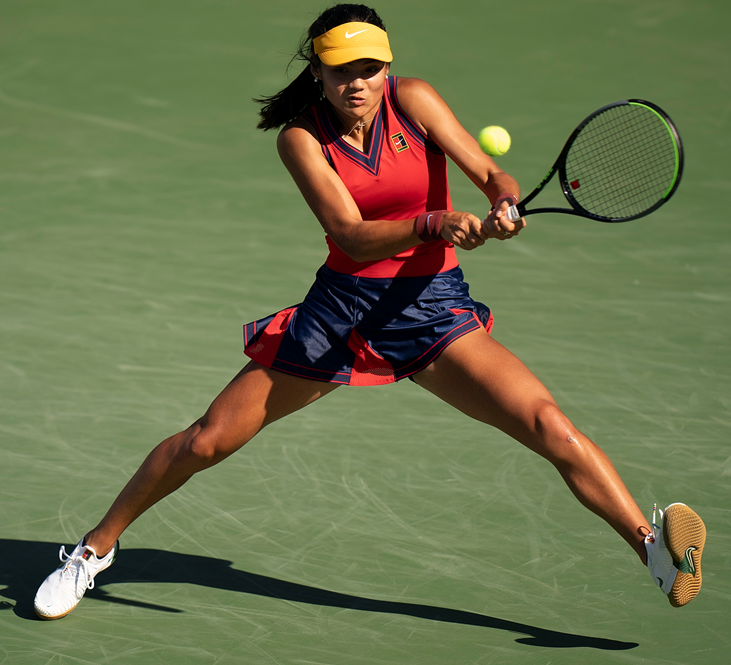
The original odds of Raducanu winning the US Open were 100-1, while Fernandez was 200-1. That disparity is probably due to the records of the two players before the tournament. Raducanu reached the fourth round of Wimbledon, the final of a WTA125 event in Chicago last month (losing to 18-year-old Clara Tauson of Denmark) as well as making it through the US Open qualifying. Fernandez’s record at her two most recent tournaments was anything but auspicious – losing 7-5, 7-6(4) in the first round of the Omnium Banque Nationale in Montreal to qualifier, No. 172-ranked Harriet Dart of Great Britain, and then 6-2, 6-2 to No. 39 Alison Riske of the U. S. in her first match in Cincinnati.
The final on Saturday at 4 p.m. will be blockbuster, must-see viewing because of the two prodigal teenagers – a finals first since Serena Williams, 17, and Martina Hingis, 18 at the 1999 US Open – competing for their first Grand Slam title.
Both are fearless, steely fighters with an ability to hit big and move beautifully. And both have won over US Open crowds with their winsome personalities and dynamic tennis.
In her on-court interview after defeating Sakkari on Thursday night, Raducanu was coy about admitting to feeling any pressure playing a fellow-teenager like Fernandez, saying, “is there any expectation? I’m a qualifier so technically on paper there’s no pressure on me.”
But the stakes are high, not only for a Grand Slam title and the winner’s prize money of $2.5 million (USD), also for a significant rise in the rankings. Fernandez, who started the tournament at No. 73, could go to No. 19 (two spots ahead of Bianca Andreescu at No. 21) with a victory, while Raducanu, No. 150, will climb all the way up to No. 23 if she wins.
But for now they remain No. 73 and No. 150 respectively, in a much more obscure rankings stratosphere than Williams, at No. 6, and Hingis, at No. 1, were for that 1999 final.
FROM THE ARCHIVES
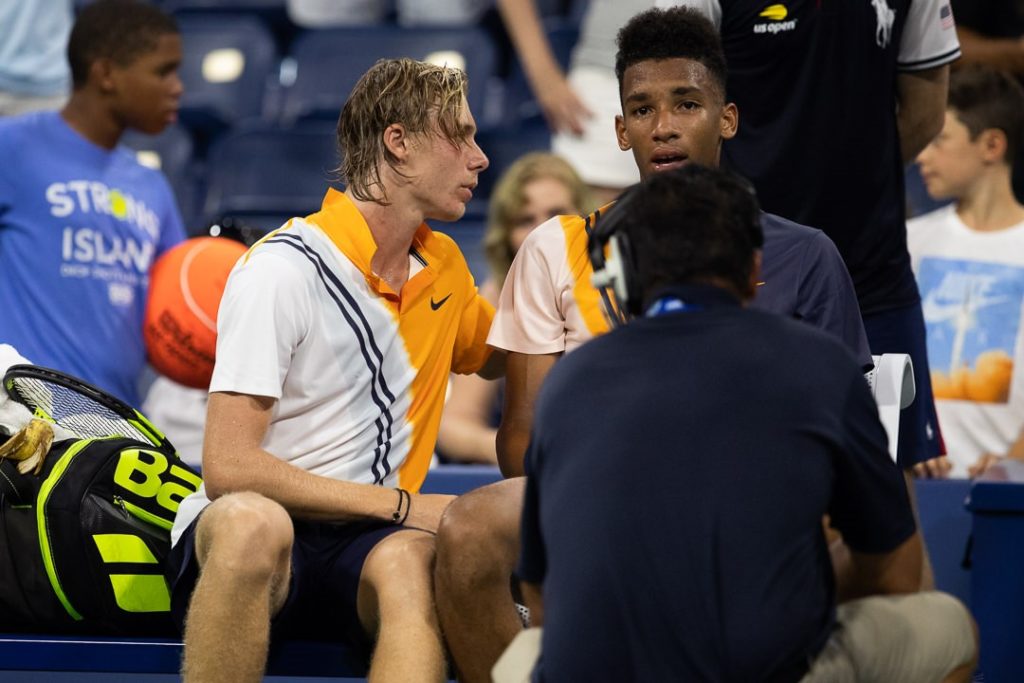
It was a gut-wrenching moment in the growth of Canada’s current two top men’s players when Félix Auger-Aliassime retired with Denis Shapovalov leading 7-5, 5-7, 4-1 in their first-round match at the 2018 US Open. Auger-Aliassime had a racing-heart arrhythmia condition and had to stop. Shapovalov tried to console him after what was their first main-tour meeting. He was 19 and Auger-Aliassime was 18.
Feature Photo: camerawork usa






